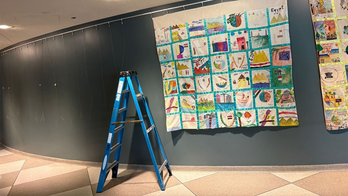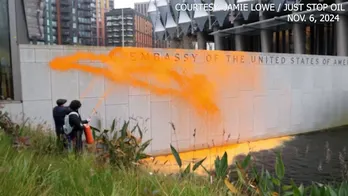Archaeologists in Turkey have identified massive structures below a Roman-era castle
DIYARBAKIR PROVINCE, Turkey — As part of what was once ancient Mesopotamia, Turkey has long been fertile ground for archaeologists. It's home to significant sites that even predate Mesopotamia — UNESCO World Heritage Sites such as Gobekli Tepe, a Neolithic settlement believed to be more than 10,000 years old with what may be the world's oldest place of worship, and Catalhoyuk, a proto-city dating back some 9,000 years.
Now, more recent sites in the country's southeast are yielding finds that archaeologists say may change modern understanding of this part of the world's past, moving the footprint of pre-Roman activity in the area farther east than was previously believed.
Zerzevan Castle, the site of a Roman Empire military garrison, is providing what UNESCO calls "important information about the Roman soldiers, civilians' daily lives and the battles."
And then there's the Mithras Temple. The Mithras religion — also known as the "Mithras cult" — is believed to have originated in ancient Persia, and the temple, discovered in 2017, is possibly the best-preserved such temple in the world, says UNESCO.
Yet to be excavated are huge, multistory structures that archaeologists have identified thanks to ground-penetrating radar scans. These remain below ground and are revealing layer upon layer of artifacts, some dating back well into pre-Roman history.
Sitting near an ancient church built on a hill high above the temple, archaeologist Aytac Coskun says the first time he saw the place, he knew he had to excavate.
"I first came to Diyarbakir in 2005," says Coskun, "and when I saw this hill, I saw some pieces of artifacts, and I knew no excavation had been done before. So as soon as I saw it, I knew it had to be a dig because there must be something significant underneath."
Underground residential areas may have sheltered 10,000 people in wartime
A tour of the site reveals some what he and his team have excavated in recent years — a sprawling rock altar, an underground church, a water canal stretching for at least several miles.
Coskun and his team have unearthed objects including a beautifully preserved and ornately decorated Roman-era bronze baptismal bucket and an Assyrian-era stamp, a kind of official seal carved into rock, that could date back some 3,000 years.
"The digging we're doing inside the castle walls is 57,000 square meters [68,171 square yards]," he says. "It's a huge area. And outside of it...is (something) like 10 million square meters [3.86 square miles]."
Coskun believes some 1,500 people, both military and civilian, lived here during times of peace. In wartime, he says, it's likely that some 10,000 people from the surrounding area came here to seek shelter.
That, he says, may help explain the expansive underground living areas. So far, he says they've excavated six residential complexes inside the castle walls, and there are 99 more still below the surface.
That's just one reason Coskun says this site has the potential to change modern understanding of this part of the world and its archaeological and architectural history.
"It's totally open to new discoveries, that's for sure," he says. "We don't know what else we'll find. We've only dug around 10% of the area on the surface within the castle walls. And beyond the castle walls," he adds, "you see more living areas, the canal, a necropolis where the leading families buried their dead, and ceremonial areas. So, there will be more to come."
Excavations, he says, could continue for another 30 years.
Disclaimer: The copyright of this article belongs to the original author. Reposting this article is solely for the purpose of information dissemination and does not constitute any investment advice. If there is any infringement, please contact us immediately. We will make corrections or deletions as necessary. Thank you.







